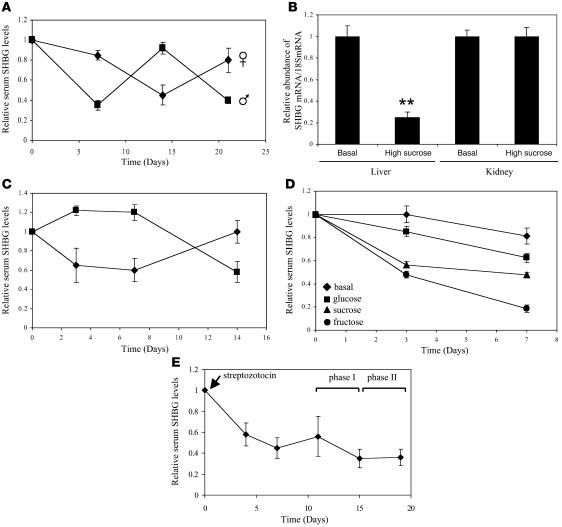Figure 1. Hepatic production of SHBG in mice expressing human SHBG transgenes (21) is reduced after feeding diets with high monosaccharide content or increasing blood glucose levels by streptozotocin treatment.
(A and B) Mice were fed high-sucrose or isocaloric basal diets for 7 days (3 per group), and the diets were then reversed in two 7-day cycles. Serum SHBG levels are expressed as mean ± SEM relative to pretreatment levels to compensate for between-animal variability (A). At day 21, human SHBG mRNA abundance was determined in relation to 18S RNA (mean ± SEM) in liver and kidney; **P < 0.01 compared with basal diet values (B). (C) Serum SHBG levels in mice expressing a human SHBG transgene lacking a USF-binding site in the promoter (24) were reduced by feeding a high-sucrose diet. Animals (3 per group) were fed a basal diet (squares) or a high-sucrose diet (diamonds) for 7 days, and diets were then reversed for 7 days. Serum SHBG measurements (mean ± SEM) are expressed relative to pretreatment levels. (D) Serum SHBG levels (mean ± SEM) were reduced relative to pretreatment levels in human SHBG transgenic mice (3–4 per group) fed equicaloric diets containing high glucose, sucrose, or fructose, when compared with a basal diet. (E) Human SHBG transgenic mice treated with streptozotocin were maintained on a basal diet for 11 days, followed by a high-sucrose diet (phase I) and the basal diet (phase II). Serum SHBG levels (mean ± SEM) are expressed relative to pretreatment values.

